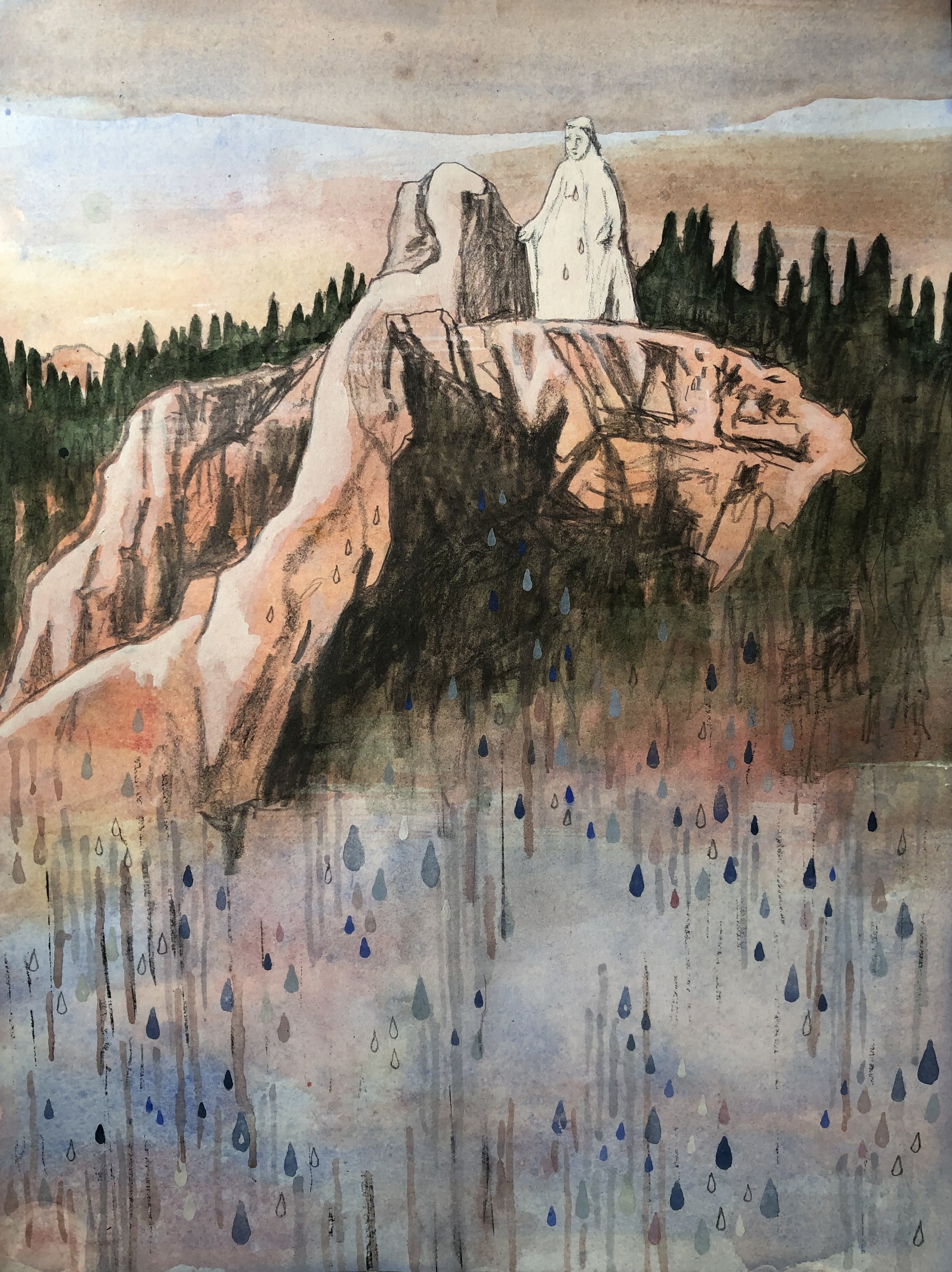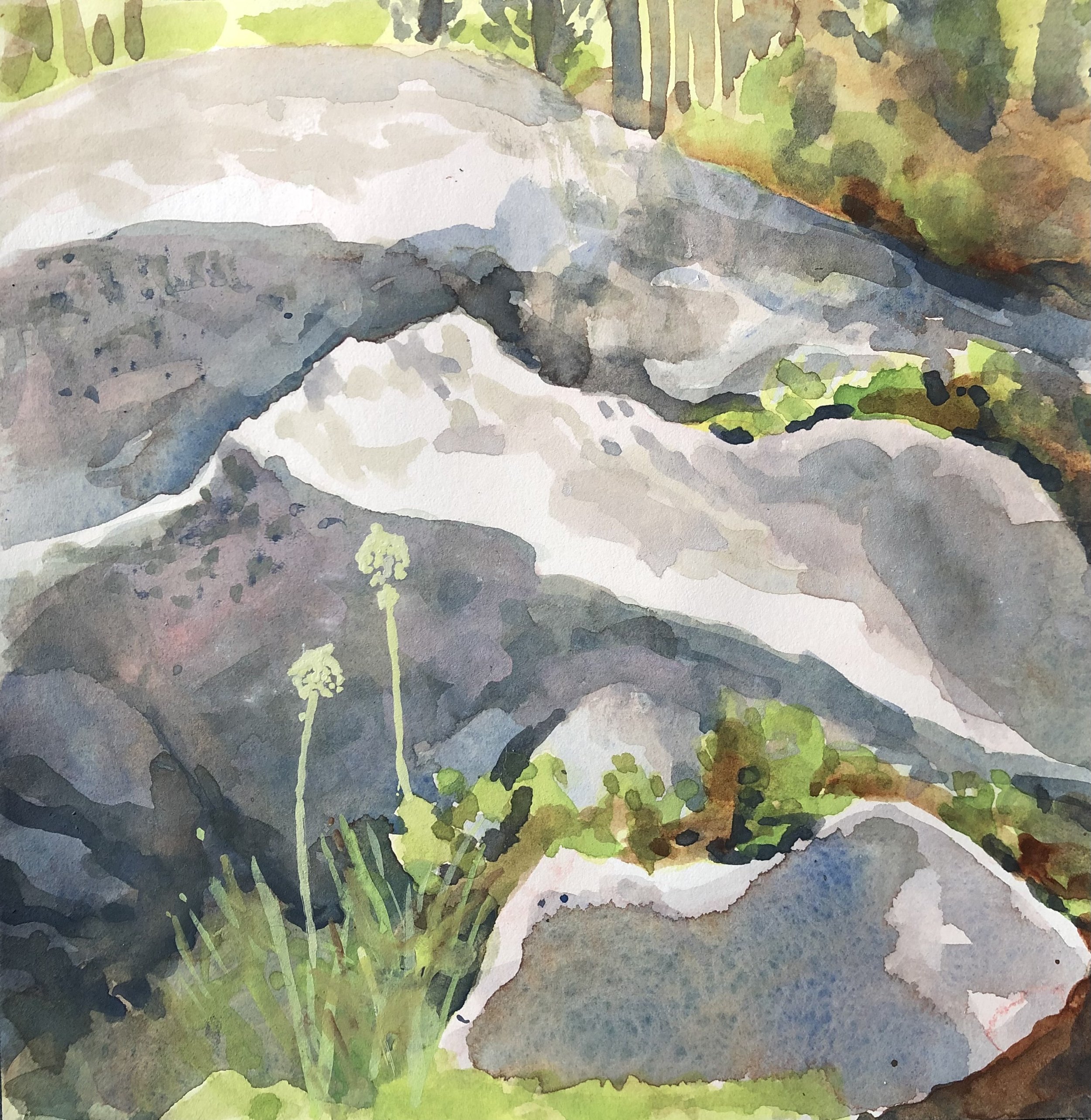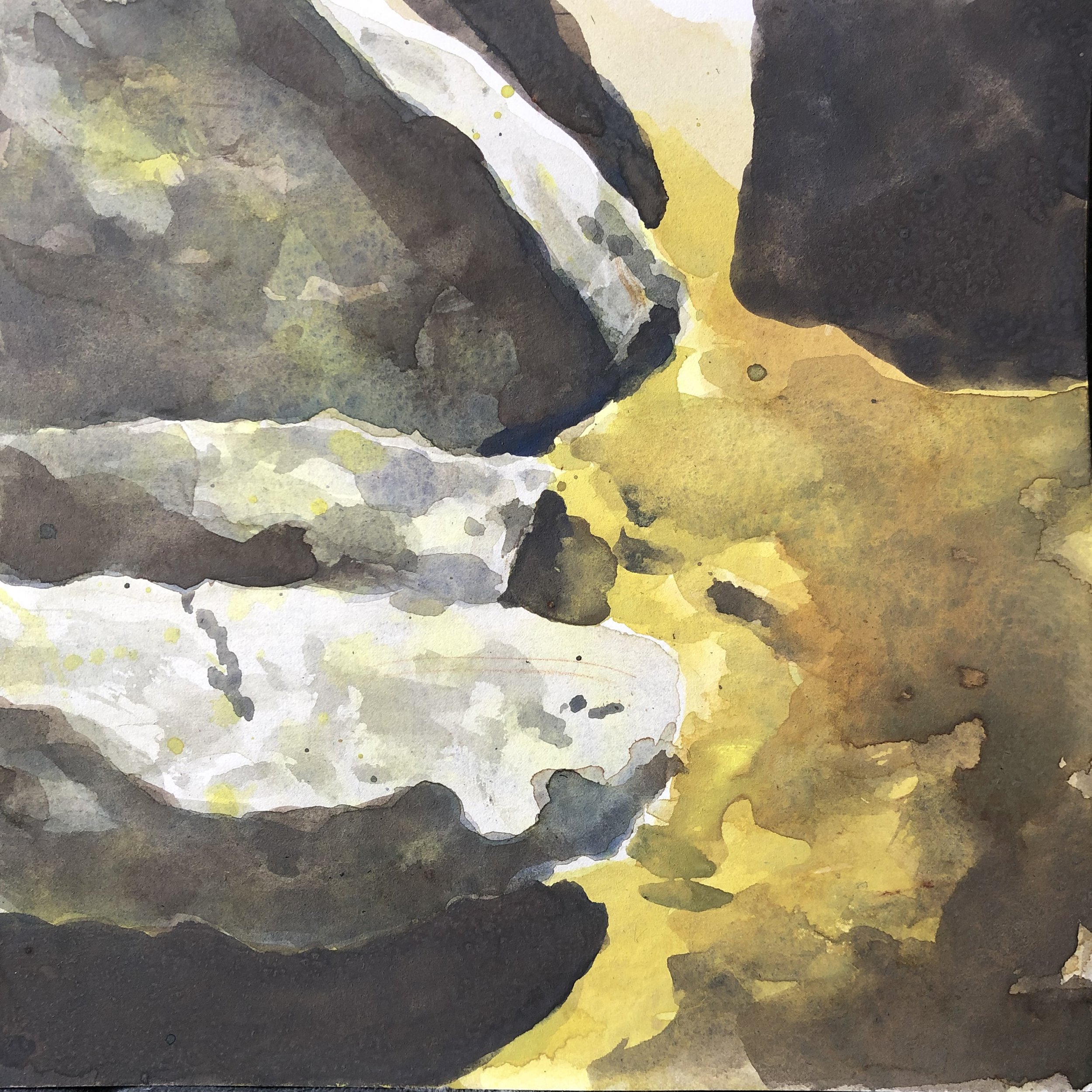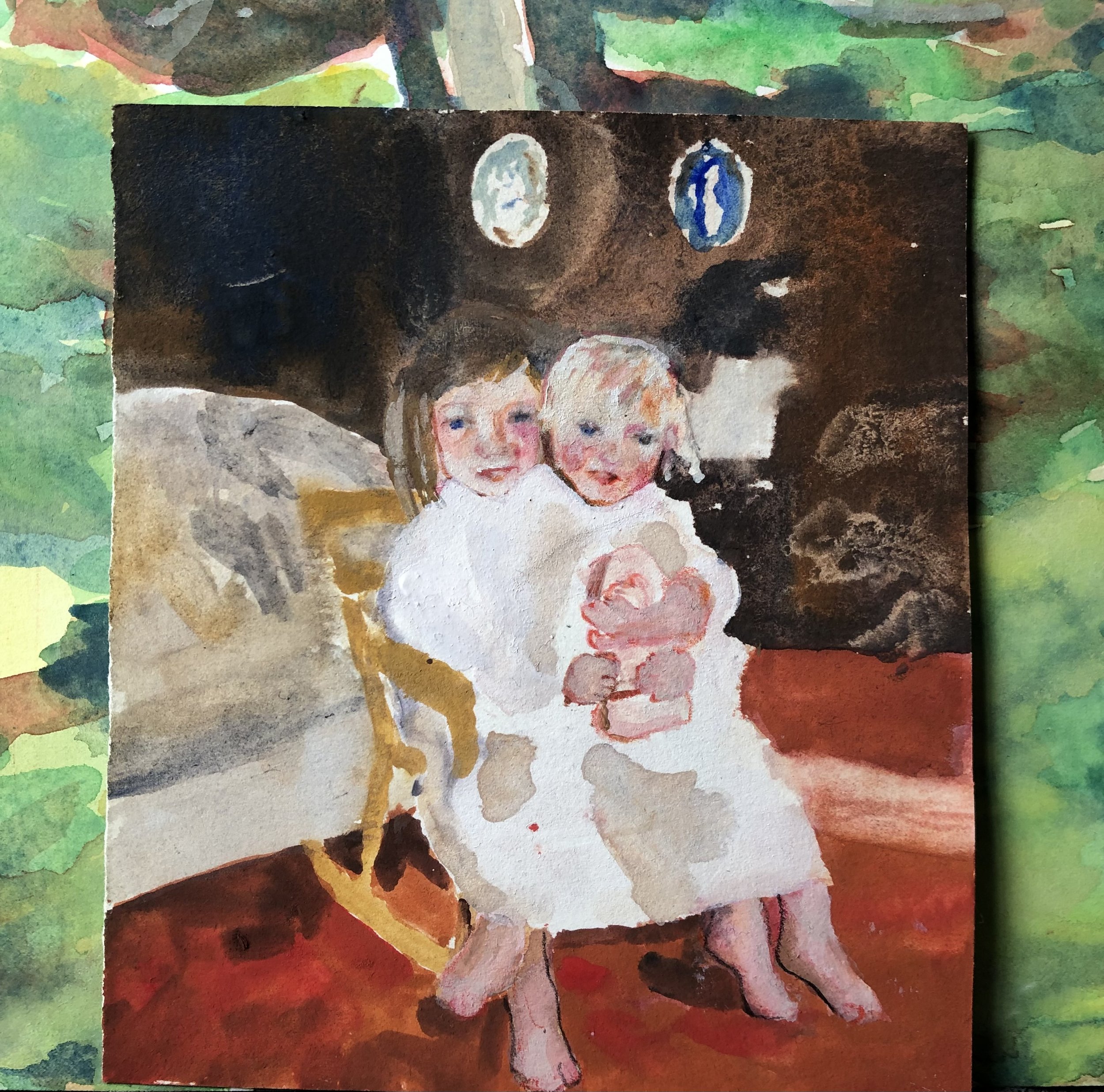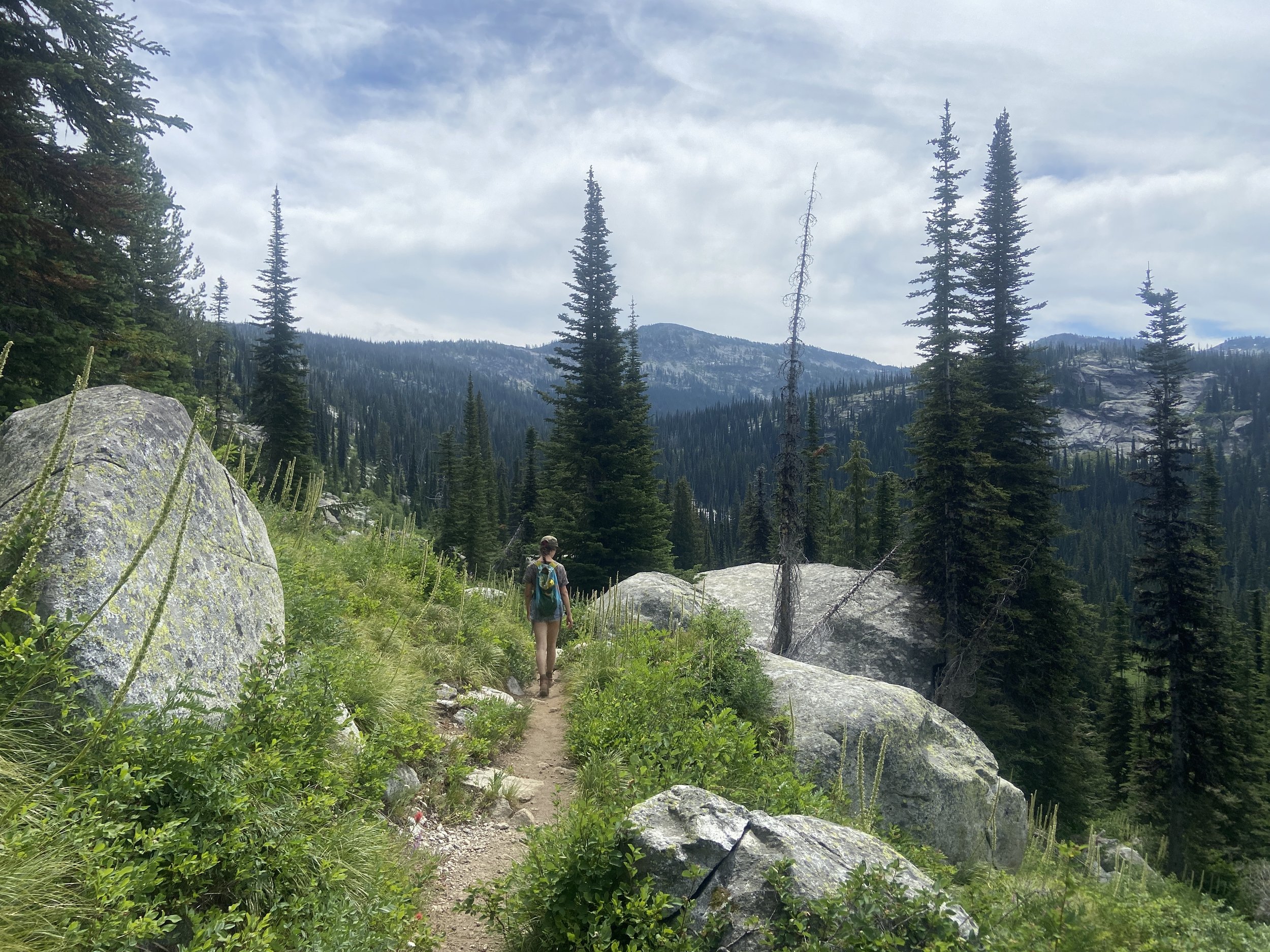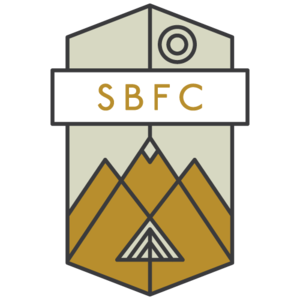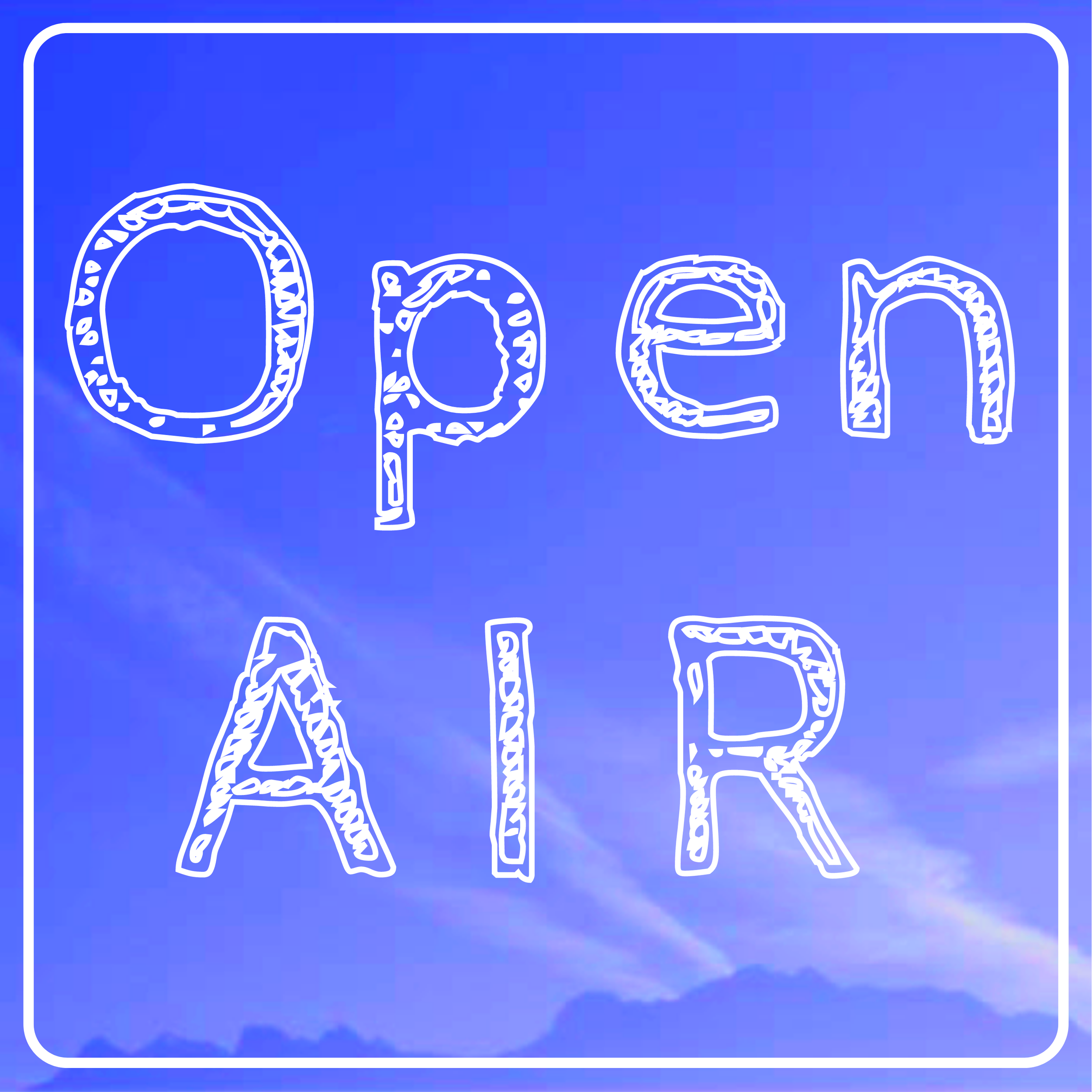Angela Cieslewitz: ISOLATION
“Leaving human society and isolating myself with no internet for a month forced a conscious engagement with time that warped my usual experience of it and left me experiencing life”
2022 Artist-in-Residence at the Selway Bitterroot Wilderness
Angela in front of the Selway Bitterroot Wilderness cabin
How was your experience as an Open AIR Artist-in-Residence?
I have dreamed of doing a residency like this for years: it went beyond anything I imagined. In a partnership between the Selway Bitterroot Frank Church Foundation and Open AIR I got to stay in a cabin in the Selway Bitterroot Wilderness for a month. I spent the first week or so feeling fairly giddy with delight just to be there. It intermittently stormed all week and I sat in the open door playing my violin and watching rain and hail come down. I set up my workspace in the cabin and got going. Sam, the Ranger from the Darby station made sure there was a table in the cabin for me to work at. This turned out to be a huge old ranger desk and I settled into working there for hours every day, really wrestling with my writing project. At times this was elating - I felt like I was getting so much done - at other times it felt hard and directionless. This arc of the creative process is not new to me, but going through so much of it in such a short time certainly is. I took breaks from writing to go out and paint some landscapes and hike up to the lakes.
Angela working in the cabin
What was your research process during this time?
I was working on writing and illustrating a memoir about my earliest years as a kid in Montana. I brought some photos and notes to prompt reflection but my actual research process involved a lot of walking and thinking and looking at nature. It’s interesting to be thinking about one’s own life in context of being in a natural and non-human environment. Nature has a timeline and a history, but it is also refreshingly repetitive, cyclical, insistent. I thought about time in terms of my own past, in terms of the alpine spring unfolding around me (snow melting, bear grass blooming) and in terms of the long, long days that I was spending alone in the longest part of summer. In a way this engagement with time was my research. We are always engaging time, of course, but not always consciously. Leaving human society and isolating myself with no internet for a month forced a conscious engagement with time that warped my usual experience of it and left me experiencing life as in fact very, very long and full of an infinite number of moments in which to do something creative or else to just exist and observe. And of course for me, the work is in translating these experiences and reflections into writing and art.
Artwork created by Angela during her residency
What are you up to now (post Open AIR)?
I’m still struggling with time, as usual, but not in the highly productive and focused way I experienced in the Bitterroot. I am still working on my memoir, and finding the progress slow. I just put up a show in a gallery in Oakland, California and got to include some of the work that I did this summer - which is exciting! This show is almost exclusively nature drawings and paintings, with occasional figurative elements, appropriately.
Angela next to the lake near the cabin residency
How would you describe your work?
My visual work finds its inspiration in observational drawings and paintings of people and nature as well as depictions of memories and dreams. My work is multi-media, with an emphasis on drawing and line work. My images tend toward the surreal and are suggestive of an interior world and subjective experiences.
Recently I have begun to develop myself as a writer because I am working on this memoir project. I think that my writing has a similar quality to my visual work; rooted in reality but more interested in the ephemeral quality of things remembered or imagined or wondered about. I am still working on developing this and feel that my voice as a writer is still emerging.
Can you talk about the difference between being a maker/director of your own work and being a viewer?
I wish I knew more about what being a viewer of my art is like. It would be great if there was a feed-back box where people tell you the emotions that your art brings up for them. Recently I had a retired art professor tell me that he wishes my drawings of trees looked “more connected to the ground.” Which is a helpful suggestion and rare to get in a gallery context but still doesn’t hit on the more important question of how the art is affecting the viewer or whether it allows them to connect to it in some way.
When I’m making art I rarely think about how it’s going to affect people, whether it will successfully communicate, or if it will confuse people or whatever. It would be hard for me to make art while thinking about someone else’s experience of it. I think this is one way to handle the question of audience, ignoring it, but is probably not the most generous or interesting one. I would like to become more in touch with the viewer’s experience as part of my creative process.
Artwork created by Angela during her residency
What keeps you returning to this subject, body of work?
In the case of the memoir project this question feels really important as I continue to write and notice that my interest and focus changes throughout the process. I think a really interesting subject matter is interesting to people for multiple reasons. For example, I first started writing about my parents after going through a break up and then remembering my parents downplaying their divorce and wondering what it was really like for them. I was interested in understanding grief and its timeline and what it says about love. But now a few years later, I’m still writing about my parents but I’m less interested in break-ups. I’m still interested in grief and in my Dad’s American-success-story-mindset which says that happiness is a sign of virtue or “doing it right”, and experiencing grief is a sign of not being very conscious. And I wonder about that mentality and how it affects relationships. So my focus shifts but my interest is still there.
I also think that what makes things interesting is not understanding them, it’s like a puzzle, you look at it from all kinds of angles and try to write about it anyway even though you don’t fully get it. Trying to understand makes something interesting and makes the creative process challenging as you try to put this mystery into words.
Angela hiking through the Bitteroot Wilderness



